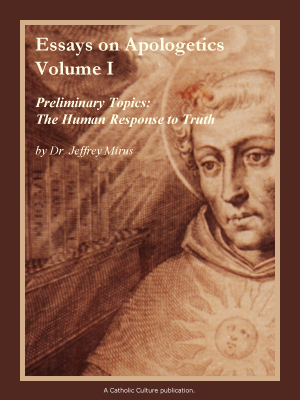priestly formation in L.A.
By Diogenes ( articles ) | Nov 17, 2005
The LA Times has a bruising story on St. John's Camarillo, the seminary of the Archdiocese of Los Angeles. The grenade graf says "About 10% of St. John's graduates reported to have been ordained in the Los Angeles Archdiocese since 1950 -- 65 of roughly 625 -- have been accused of molesting minors," and the article goes on to paint a picture of sexual anarchy (largely, but not entirely, homosexual) on the seminary grounds. One former seminarian reports that he often could not use the dorm bathroom at night "because it was occupied by men having sex." Many LA priests interviewed claim to have been oblivious to the situation when they attended St. John's, and it must be conceded that the Times wants to foreground the most lurid allegations, but on the other hand the picture is different in no important respect from that given in Jason Berry's 1992 book on The Crisis.
Among several lines in the story worthy of comment, this one struck me:
J. Michael Hennigan, a lawyer for the archdiocese, conceded that exaggerated claims alone cannot account for the large numbers of alleged abusers in some graduating classes.
"There were a couple of years at that seminary where lightning struck," Hennigan said. "I doubt we'll ever figure out why."
"I doubt we'll ever figure out why." That sounds less like a man who has been flummoxed in his search for an elusive answer than one with zero appetite to find the answer in the first place. Is it really impossible to find out the causes?
When U.S. State Department official Alger Hiss was finally exposed as a Soviet agent in 1949, the government departments for which he worked did not simply give a "who wudda thunk it?" shrug and move on to business as usual. Researchers made an extraordinarily detailed examination of Hiss's entire career, asking above all "Whom did Hiss bring into government work? Whom did Hiss promote or recommend for sensitive tasks? Whom did Hiss try to torpedo? Who went out of his way to advance Hiss's career?" The premise, obviously, is that a security failure is rarely an isolated occurrence, that other miscreants will have escaped detection, and that by taking back-bearings one can discover some of the still-hidden villains among those whom the known subversive regarded as friendly. In the case of Hiss, both those he helped and those who helped him included men who turned out to be fellow Communists -- in addition to many dupes, of course.
Granted, a diocese lacks trained investigators and subpoena powers to conduct a full-scale government-style investigation. But then, a full-scale investigation isn't called for: we're talking about 625 men. If they wanted to know the answer badly enough they could put the right questions to the right people and connect the dots that would explain how it came about that "lightning struck" when and where it did.
"I doubt we'll ever figure out why." I doubt you will either, Mike, especially if you know the answer already.
All comments are moderated. To lighten our editing burden, only current donors are allowed to Sound Off. If you are a current donor, log in to see the comment form; otherwise please support our work, and Sound Off!







